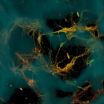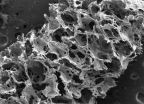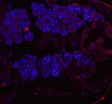(Press-News.org) Bioengineers have created three-dimensional brain-like tissue that functions like and has structural features similar to tissue in the rat brain and that can be kept alive in the lab for more than two months.
As a first demonstration of its potential, researchers used the brain-like tissue to study chemical and electrical changes that occur immediately following traumatic brain injury and, in a separate experiment, changes that occur in response to a drug. The tissue could provide a superior model for studying normal brain function as well as injury and disease, and could assist in the development of new treatments for brain dysfunction.
The brain-like tissue was developed at the Tissue Engineering Resource Center at Tufts University, Boston, which is funded by the National Institute of Biomedical Imaging and Bioengineering (NIBIB) to establish innovative biomaterials and tissue engineering models. David Kaplan, Ph.D., Stern Family Professor of Engineering at Tufts University is director of the center and led the research efforts to develop the tissue.
Currently, scientists grow neurons in petri dishes to study their behavior in a controllable environment. Yet neurons grown in two dimensions are unable to replicate the complex structural organization of brain tissue, which consists of segregated regions of grey and white matter. In the brain, grey matter is comprised primarily of neuron cell bodies, while white matter is made up of bundles of axons, which are the projections neurons send out to connect with one another. Because brain injuries and diseases often affect these areas differently, models are needed that exhibit grey and white matter compartmentalization.
Recently, tissue engineers have attempted to grow neurons in 3D gel environments, where they can freely establish connections in all directions. Yet these gel-based tissue models don't live long and fail to yield robust, tissue-level function. This is because the extracellular environment is a complex matrix in which local signals establish different neighborhoods that encourage distinct cell growth and/or development and function. Simply providing the space for neurons to grow in three dimensions is not sufficient.
Now, in the Aug. 11th early online edition of the journal Proceedings of the National Academy of Sciences, a group of bioengineers report that they have successfully created functional 3D brain-like tissue that exhibits grey-white matter compartmentalization and can survive in the lab for more than two months.
"This work is an exceptional feat," said Rosemarie Hunziker, Ph.D., program director of Tissue Engineering at NIBIB. "It combines a deep understand of brain physiology with a large and growing suite of bioengineering tools to create an environment that is both necessary and sufficient to mimic brain function."
The key to generating the brain-like tissue was the creation of a novel composite structure that consisted of two biomaterials with different physical properties: a spongy scaffold made out of silk protein and a softer, collagen-based gel. The scaffold served as a structure onto which neurons could anchor themselves, and the gel encouraged axons to grow through it.
To achieve grey-white matter compartmentalization, the researchers cut the spongy scaffold into a donut shape and populated it with rat neurons. They then filled the middle of the donut with the collagen-based gel, which subsequently permeated the scaffold. In just a few days, the neurons formed functional networks around the pores of the scaffold, and sent longer axon projections through the center gel to connect with neurons on the opposite side of the donut. The result was a distinct white matter region (containing mostly cellular projections, the axons) formed in the center of the donut that was separate from the surrounding grey matter (where the cell bodies were concentrated).
Over a period of several weeks, the researchers conducted experiments to determine the health and function of the neurons growing in their 3D brain-like tissue and to compare them with neurons grown in a collagen gel-only environment or in a 2D dish.
The researchers found that the neurons in the 3D brain-like tissues had higher expression of genes involved in neuron growth and function. In addition, the neurons grown in the 3D brain-like tissue maintained stable metabolic activity for up to five weeks, while the health of neurons grown in the gel-only environment began to deteriorate within 24 hours. In regard to function, neurons in the 3D brain-like tissue exhibited electrical activity and responsiveness that mimic signals seen in the intact brain, including a typical electrophysiological response pattern to a neurotoxin.
Because the 3D brain-like tissue displays physical properties similar to rodent brain tissue, the researchers sought to determine whether they could use it to study traumatic brain injury. To simulate a traumatic brain injury, a weight was dropped onto the brain-like tissue from varying heights. The researchers then recorded changes in the neurons' electrical and chemical activity, which proved similar to what is ordinarily observed in animal studies of traumatic brain injury.
Kaplan says the ability to study traumatic injury in a tissue model offers advantages over animal studies, in which measurements are delayed while the brain is being dissected and prepared for experiments.
"With the system we have, you can essentially track the tissue response to traumatic brain injury in real time," said Kaplan. "Most importantly, you can also start to track repair and what happens over longer periods of time."
Kaplan emphasized the importance of the brain-like tissue's longevity for studying other brain disorders. "The fact that we can maintain this tissue for months in the lab means we can start to look at neurological diseases in ways that you can't otherwise because you need long timeframes to study some of the key brain diseases," he said.
Hunziker added, "Good models enable solid hypotheses that can be thoroughly tested. The hope is that use of this model could lead to an acceleration of therapies for brain dysfunction as well as offer a better way to study normal brain physiology."
Kaplan and his team are looking into how they can make their tissue model more brain-like. In this recent report, the researchers demonstrated that they can modify their donut scaffold so that it consists of six concentric rings, each able to be populated with different types of neurons. Such an arrangement would mimic the six layers of the human brain cortex, in which different types of neurons exist.
As part of the funding agreement for the Tissue Engineering Resource Center, NIBIB requires that new technologies generated at the center be shared with the greater biomedical research community.
"We look forward to building collaborations with other labs that want to build on this tissue model," said Kaplan.
INFORMATION:
This work was supported by NIH's National Institute of Biomedical Imaging and Bioengineering under award #EB002520
NIBIB's mission is to improve health by leading the development and accelerating the application of biomedical technologies. The Institute is committed to integrating the physical and engineering sciences with the life sciences to advance basic research and medical care. NIBIB supports emerging technology research and development within its internal laboratories and through grants, collaborations, and training. More information is available at the NIBIB website: http://www.nibib.nih.gov.
About the National Institutes of Health (NIH): NIH, the nation's medical research agency, includes 27 Institutes and Centers and is a component of the U.S. Department of Health and Human Services.
NIH is the primary federal agency conducting and supporting basic, clinical, and translational medical research, and is investigating the causes, treatments, and cures for both common and rare diseases. For more information about NIH and its programs, visit http://www.nih.gov.
Bioengineers create functional 3-D brain-like tissue
Tissue model could change the way scientists study the brain in vitro-NIH study
2014-08-11
ELSE PRESS RELEASES FROM THIS DATE:
Scientists demonstrate long-sought drug candidate can halt tumor growth
2014-08-11
LA JOLLA, CA – August 11, 2014 – It's a trick any cat burglar knows: to open a locked door, slide a credit card past the latch.
Scientists at The Scripps Research Institute (TSRI) tried a similar strategy when they attempted to disrupt the function of MYC, a cancer regulator thought to be "undruggable." The researchers found that a credit card-like molecule they developed somehow moves in and disrupts the critical interactions between MYC and its binding partner.
The research, published the week of August 11 in the journal Proceedings of the National Academy of Sciences, ...
Elusive viral 'machine' architecture finally rendered
2014-08-11
VIDEO:
The new rendering of the protein-DNA complex, or machine, that the Lambda virus uses to insert its DNA into that of its E. coli host.
Click here for more information.
For half a century biologists have studied the way that the lambda virus parks DNA in the chromosome of a host E. coli bacterium and later extracts it as a model reaction of genetic recombination. But for all that time, they could never produce an overall depiction of the protein-DNA machines that carry out ...
Native bacteria block Wolbachia from being passed to mosquito progeny
2014-08-11
Native bacteria living inside mosquitoes prevent the insects from passing Wolbachia bacteria -- which can make the mosquitoes resistant to the malaria parasite -- to their offspring, according to a team of researchers.
The team found that Asaia, a type of bacteria that occurs naturally in Anopheles mosquitoes, blocks invasion of Wolbachia into the mosquitoes' germlines -- the cells that are passed on through successive generations of an organism -- thus stopping the insects from transmitting Wolbachia to their offspring.
"Wolbachia infects up to 70 percent of all known ...
Novel drug action against solid tumors explained
2014-08-11
(SACRAMENTO, Calif.) — Researchers at UC Davis, City of Hope, Taipai Medical University and National Health Research Institutes in Taiwan have discovered how a drug that deprives the cells of a key amino acid specifically kills cancer cells.
Their paper, published today in Proceedings of the Academy of Sciences, is the culmination of nearly a decade of research into the role of arginine – and its deprivation – in the generation of excessive autophagy, a process in which the cell dies by eating itself.
Study co-author Hsing-Jien Kung, a renowned cancer biologist and ...
Reconstructions show how some of the earliest animals lived -- and died
2014-08-11
VIDEO:
This is an animation of the growth and development of the extinct rangeomorph species Beothukis mistakenis, which lived during the Ediacaran Period from approximately 575 to 555 million years ago....
Click here for more information.
A bizarre group of uniquely shaped organisms known as rangeomorphs may have been some of the earliest animals to appear on Earth, uniquely suited to ocean conditions 575 million years ago. A new model devised by researchers at the University ...
A vaccine alternative protects mice against malaria
2014-08-11
A study led by Johns Hopkins Bloomberg School of Public Health researchers found that injecting a vaccine-like compound into mice was effective in protecting them from malaria. The findings suggest a potential new path toward the elusive goal of malaria immunization.
Mice, injected with a virus genetically altered to help the rodents create an antibody designed to fight the malaria parasite, produced high levels of the anti-malaria antibody. The approach, known as Vector immunoprophylaxis, or VIP, has shown promise in HIV studies but has never been tested with malaria, ...
Search for biomarkers aimed at improving treatment of painful bladder condition
2014-08-11
Winston-Salem, N.C. – August 11, 2014 – Taking advantage of technology that can analyze tissue samples and measure the activity of thousands of genes at once, scientists at Wake Forest Baptist Medical Center are on a mission to better understand and treat interstitial cystitis (IC), a painful and difficult-to-diagnose bladder condition.
"We are looking for molecular biomarkers for IC, which basically means we are comparing bladder biopsy tissue from patients with suspected interstitial cystitis to patients without the disease. The goal is to identify factors that will ...
Highly drug resistant, virulent strain of Pseudomonas aeruginosa arises in Ohio
2014-08-11
A team of clinician researchers has discovered a highly virulent, multidrug resistant form of the pathogen, Pseudomonas aeruginosa, in patient samples in Ohio. Their investigation suggests that the particular genetic element involved, which is still rare in the United States, has been spreading heretofore unnoticed, and that surveillance is urgently needed. The research is published ahead of print in Antimicrobial Agents and Chemotherapy.
The P. aeruginosa contained a gene for a drug resistant enzyme called a metallo beta-lactamase. Beta-lactamases enable broad-spectrum ...
Want to kill creativity of women in teams? Fire up the competition
2014-08-11
Recent research has suggested that women play better with others in small working groups, and that adding women to a group is a surefire way to boost team collaboration and creativity.
But a new study from Washington University in St. Louis finds that this is only true when women work on teams that aren't competing against each other. Force teams to go head to head and the benefits of a female approach evaporate.
"Intergroup competition is a double-edged sword that ultimately provides an advantage to groups and units composed predominantly or exclusively of men, while ...
New study: Ravens rule Idaho's artificial roosts
2014-08-11
A new study by the Wildlife Conservation Society (WCS), U.S. Geological Survey (USGS) and Idaho State University (ISU) explored how habitat alterations, including the addition of energy transmission towers, affect avian predators nesting in sagebrush landscapes.
Researchers compared nesting habitat selection between Common Ravens and three raptor species commonly found in sagebrush ecosystems: Red-tailed Hawks, Swainson's Hawks, and Ferruginous Hawks.
Using the data from their field research and reviewing historical data from other studies, the scientists developed ...
LAST 30 PRESS RELEASES:
Researchers observe gas outflow driven by a jet from an active galactic nucleus
Pitt student finds familiar structure just 2 billion years after the Big Bang
Evidence of cross-regional marine plastic pollution in green sea turtles
Patients with clonal hematopoiesis have increased heart disease risk following cancer treatment
Stem cell therapy for stroke shows how cells find their way in the brain
Environment: Up to 4,700 tonnes of litter flows down the Rhine each year
Maternal vaccine receipt and infant hospital and emergency visits for influenza and pertussis
Interim safety of RSVpreF vaccination during pregnancy
Stem cell engineering breakthrough paves way for next-generation living drugs
California grants $7.4 million to advance gene-edited stem cell therapy for Friedreich’s ataxia
Victoria’s Secret grant backs cutting-edge ovarian cancer research
Research paves the way for safer colonoscopy bowel prep for people with compromised gut health
JMIR Publications and Sweden's National Library announce renewal and expansion of flat-fee unlimited open access partnership for 2026
A new 3D-printed solar cell that’s transparent and color-tunable
IV iron is the cost-effective treatment for women with iron deficiency anemia and heavy menstrual bleeding
Doing good pays off: Environmentally and socially responsible companies drive value and market efficiency
City of Hope and Cellares to automate manufacturing of solid tumor CAR T cell therapy
Short-circuiting pancreatic cancer
Groundbreaking mapping: how many ghost particles all the Milky Way’s stars send towards Earth
JBNU researchers propose hierarchical porous copper nanosheet-based triboelectric nanogenerators
A high-protein diet can defeat cholera infection
A more accurate way of calculating the value of a healthy year of life
What causes some people’s gut microbes to produce high alcohol levels?
Global study reveals widespread burning of plastic for heating and cooking
MIT study shows pills that communicate from the stomach could improve medication adherence
Searching for the centromere: diversity in pathways key for cell division
Behind nature’s blueprints
Researchers search for why some people’s gut microbes produce high alcohol levels
Researchers find promising new way to boost the immune response to cancer
Coffee as a staining agent substitute in electron microscopy
[Press-News.org] Bioengineers create functional 3-D brain-like tissueTissue model could change the way scientists study the brain in vitro-NIH study








